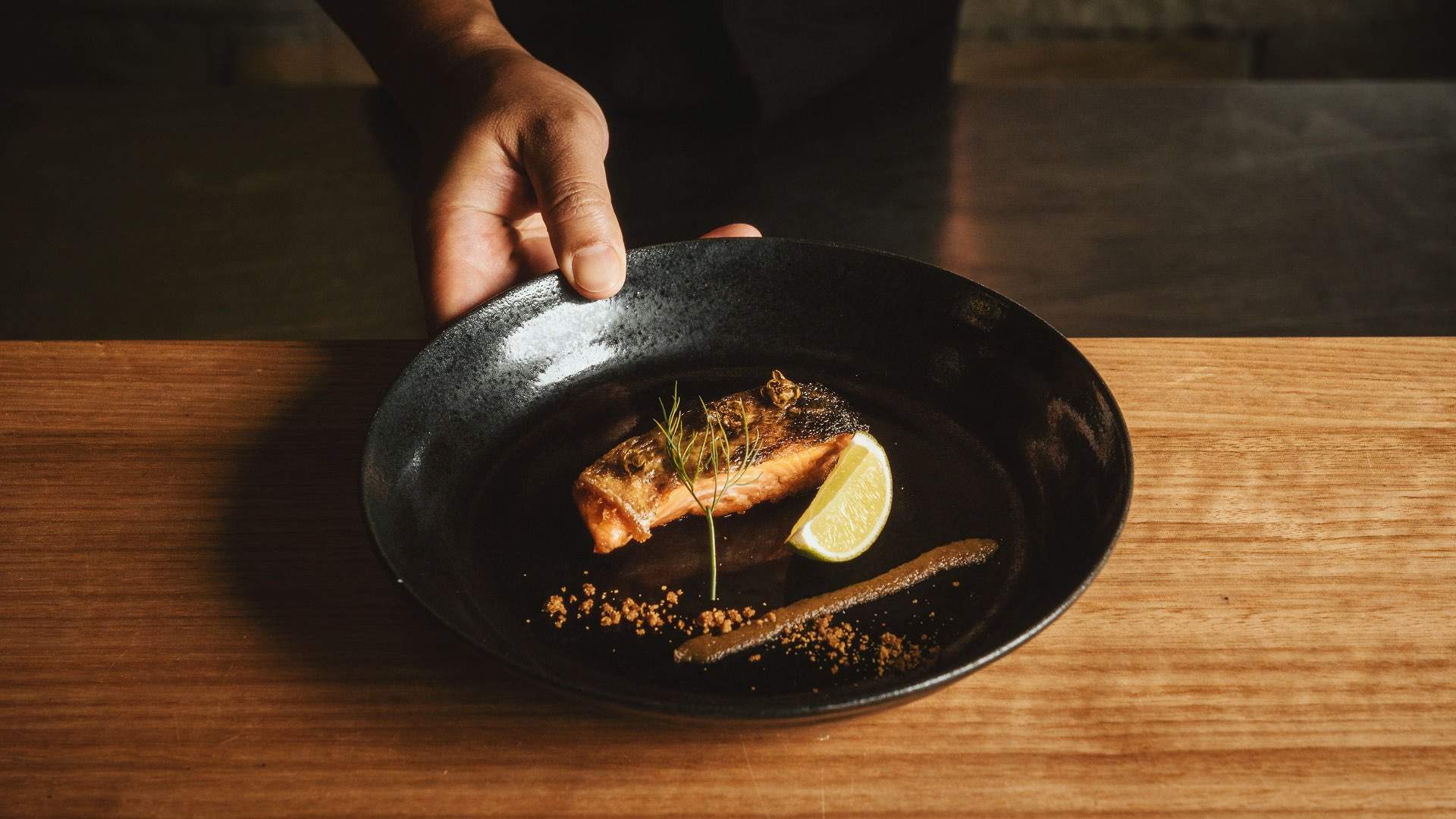
Bay Nine's Yul Kim on Bringing the Menu to Life at One of Australia’s Finest Omakase Experiences
Yul Kim shares a behind-the-scenes look at running the Japanese fine diner inside heritage-listed harbourside digs.
Yul Kim is quietly focused as he places an empty neta box alongside him and picks up his freshly sharpened knives, ready to fill the bamboo sushi case with ocean-fresh fish. Lunchtime light is streaming through Bay Nine’s wide doorway as those enjoying Sydney’s glistening harbour and hospitality staff preparing for the day’s service bustle past. “There is only one rule,” Kim smiles. “I don’t use sushi I don’t like.”
Kim is head chef at the Japanese fine diner, which sits within the sandstone walls of the historic Campbell’s Stores building in The Rocks. With no menus or pre-meal teasers as to what’s being served each night, guests at Bay Nine leave their dining experience up to their chef — staying true to the core thread of omakase. “All the courses we serve, all the ingredients, I love,” Kim says.
The master sushi chef brings a blend of natural talent, dedication to creativity and craft, and a passion for delivering an outstanding dining experience night after night after night. During the first months of spring, a herbaceous Haku Martini will be served on arrival to Bay Nine. Spotlighting Haku Vodka — the double-distilled Japanese spirit born from hakumai (white rice), koji and bamboo-charcoal filtration — the drink complements the run of cold dishes that greet guests. A showstopping union of tuna belly, uni and caviar, maybe. Or expertly sliced snapper topped with finger lime, pickled jalapeño and micro-coriander.
While everything’s a surprise at Bay Nine, there are some things you can expect: the theatrical use of a blowtorch (perhaps scorching scampi and a spicy miso reduction); a flurry of courses that have been meticulously designed for your enjoyment; and an experience that extends to the drink you have at hand courtesy of the warm, knowledgeable staff. Together with Haku Vodka, we sat down with Kim to find out just what goes into his culinary performance — and then watched him at work with an exclusive martini on its way.
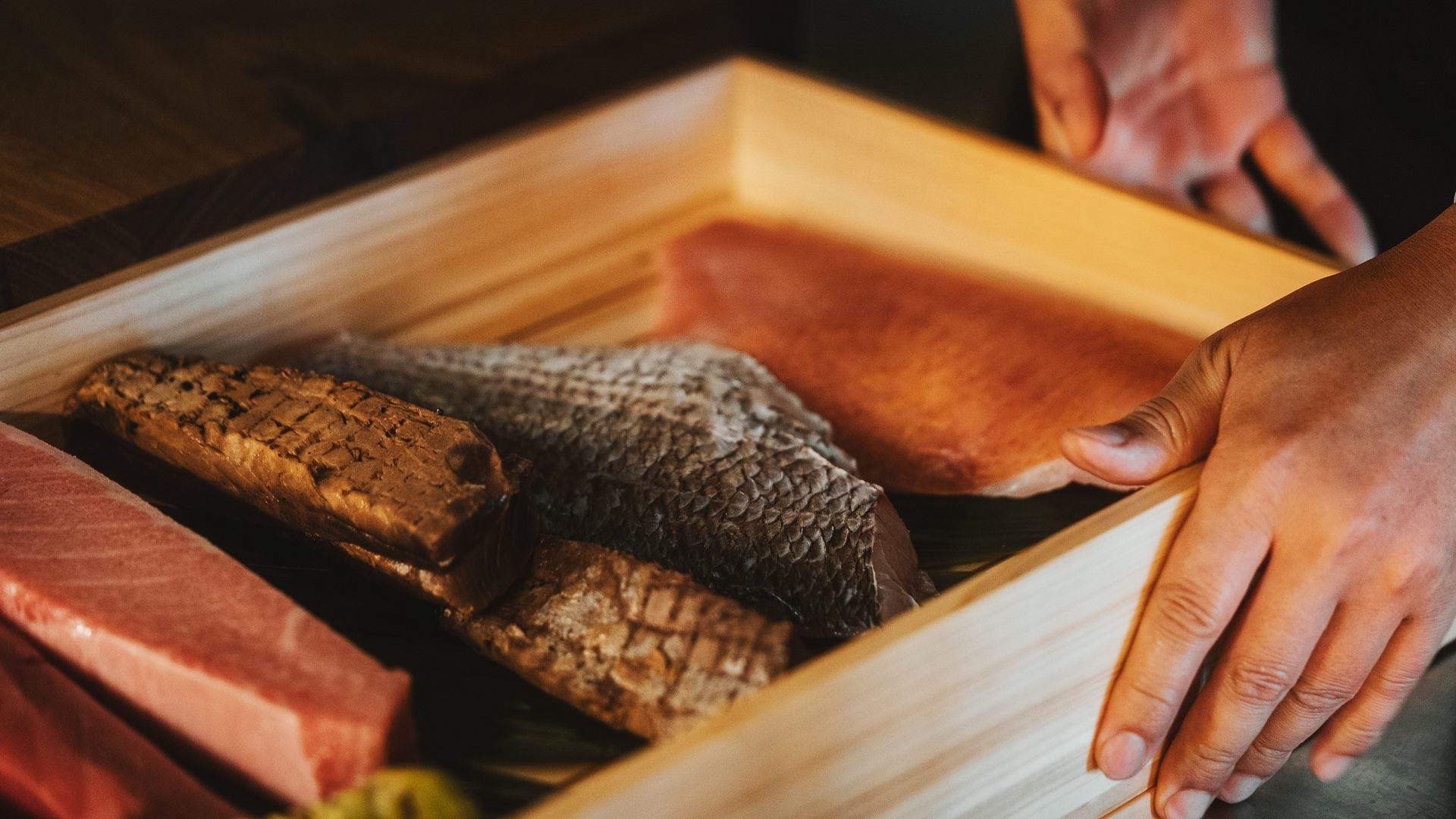
Dining at Bay Nine
Yul, how have you found your time as head chef of Bay Nine?
“You know, it has been really challenging for everyone in Australia but I’m glad that 2022 was more positive than the previous two years. Honestly, I thought I was prepared for this job but still there are a lot of things to learn. One thing for sure is that I’m enjoying this job and I’m so excited about 2023.”
What can guests expect when dining at Bay Nine?
“The most important thing to our diners is the food must be delicious, that’s the baseline. But the cherry on top is our interactivity. We story-tell throughout the omakase experience, make some jokes, why we chose certain ingredients and flavour combinations of the dishes. Above all, we just want our guests to have fun.”
On that point, how do you choose your ingredients?
“I have to plan the night before — my fish mongers send me the list of fish [they caught that day] every night, I go through the bookings, then I design the courses depending on what [fresh produce I think] I can get tomorrow. A lot of ingredients I pick on the day.”
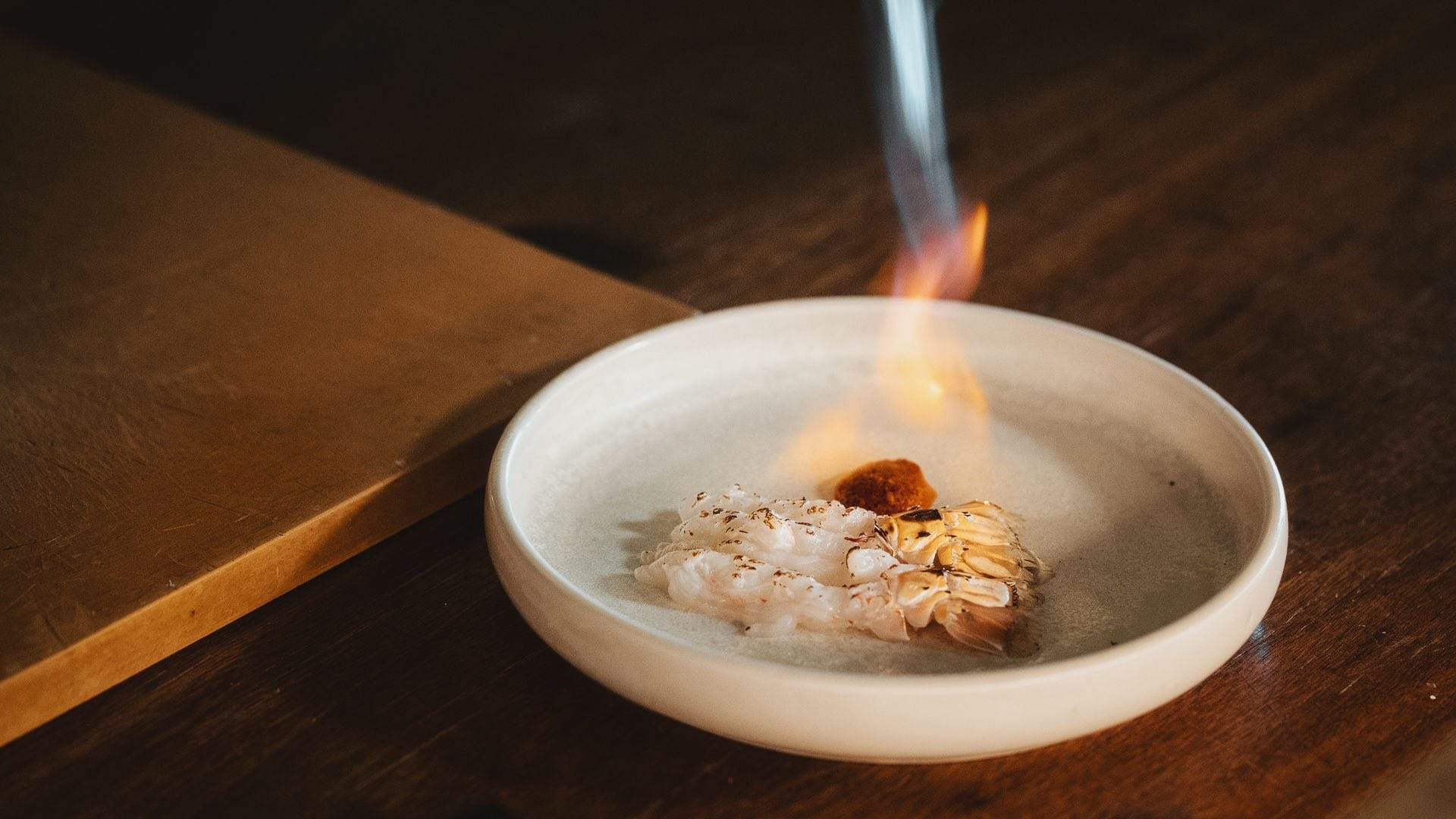
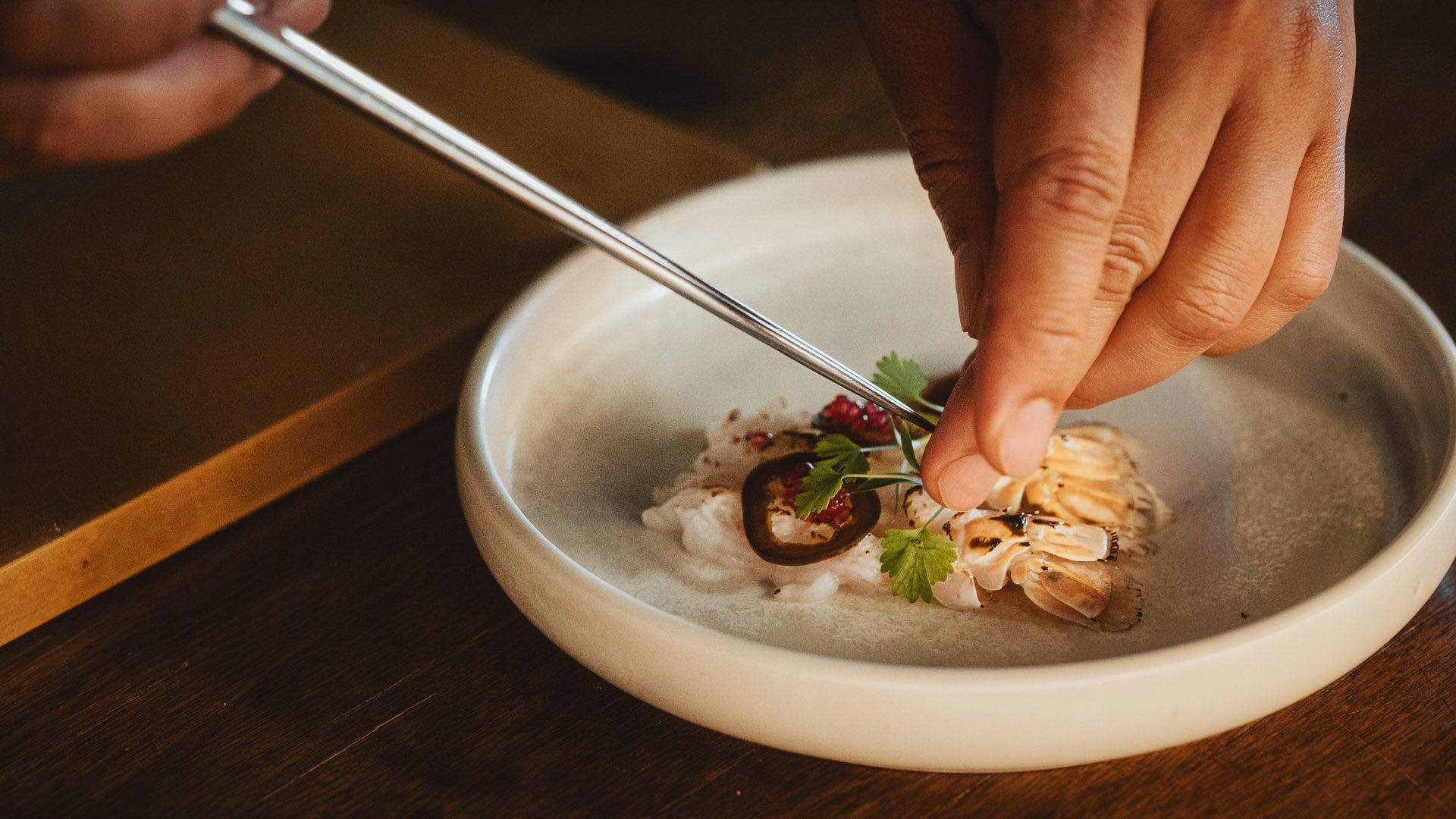
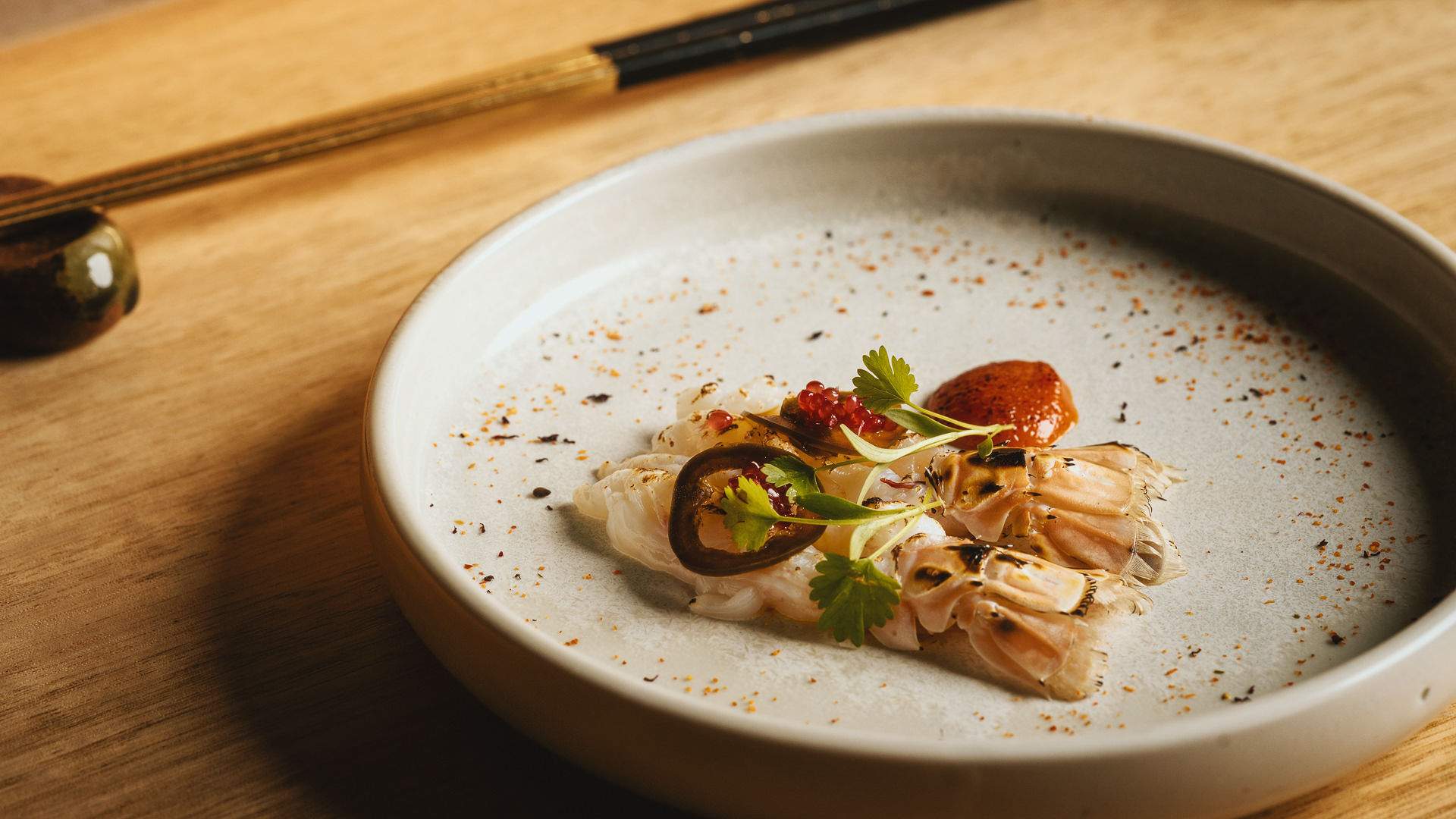
Could you talk me through your typical work day?
“I normally start with sharpening my knives, it takes like ten to fifteen minutes. It’s a big job, because I always use finishing stones to make a mirror finish — so I can see my face.
After that, my team and I review the day’s bookings, then it’s all about prepping fishes — portioning, filleting, cleaning, curing. Before each session we will also test all the sauces and miso soup to make sure the flavours are perfectly balanced. Five minutes before service, I put all my [prepared] fish into my traditional wooden neta box to present to diners.”
You don’t print your menus so guests don’t know what they’ll be eating until they are seated. While you were cooking, you mentioned that you like to impress your guests with the first dish so that they trust you. How do you develop that first dish?
“For me, the first impression matters and I like to start very, very strong and flavoursome. My first dish has caviar, Tasmanian sea urchin and bluefin tuna belly tartare (pictured below). [When diners arrive], everyone is actually very nervous, it’s quite awkward. But I always open the course with joking to make them get more comfortable. I ask them ‘So, I am pretty sure you guys all love seafood?’ and they, of course, say yes. Guests always give me two thumbs up for the first course.”
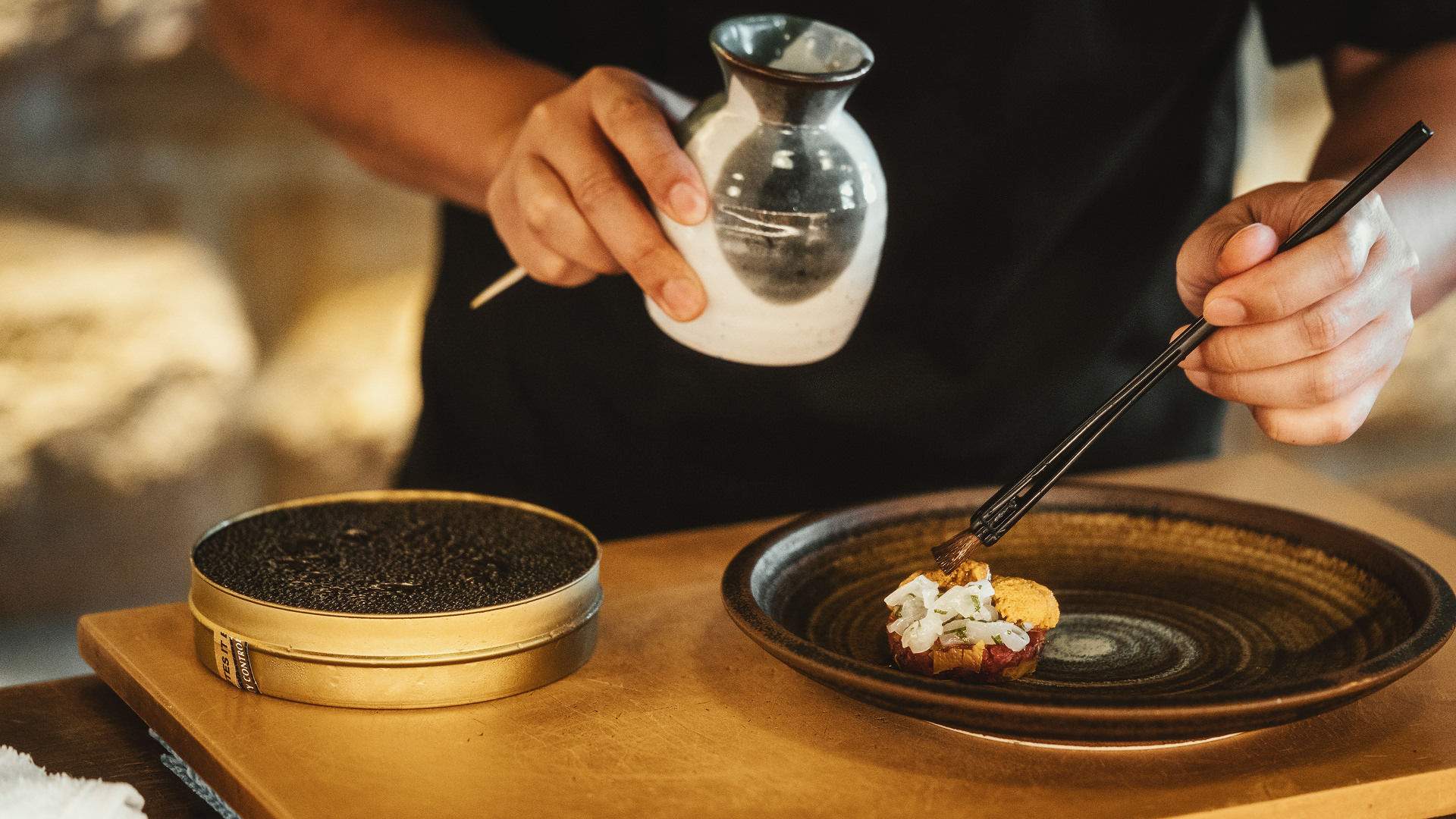
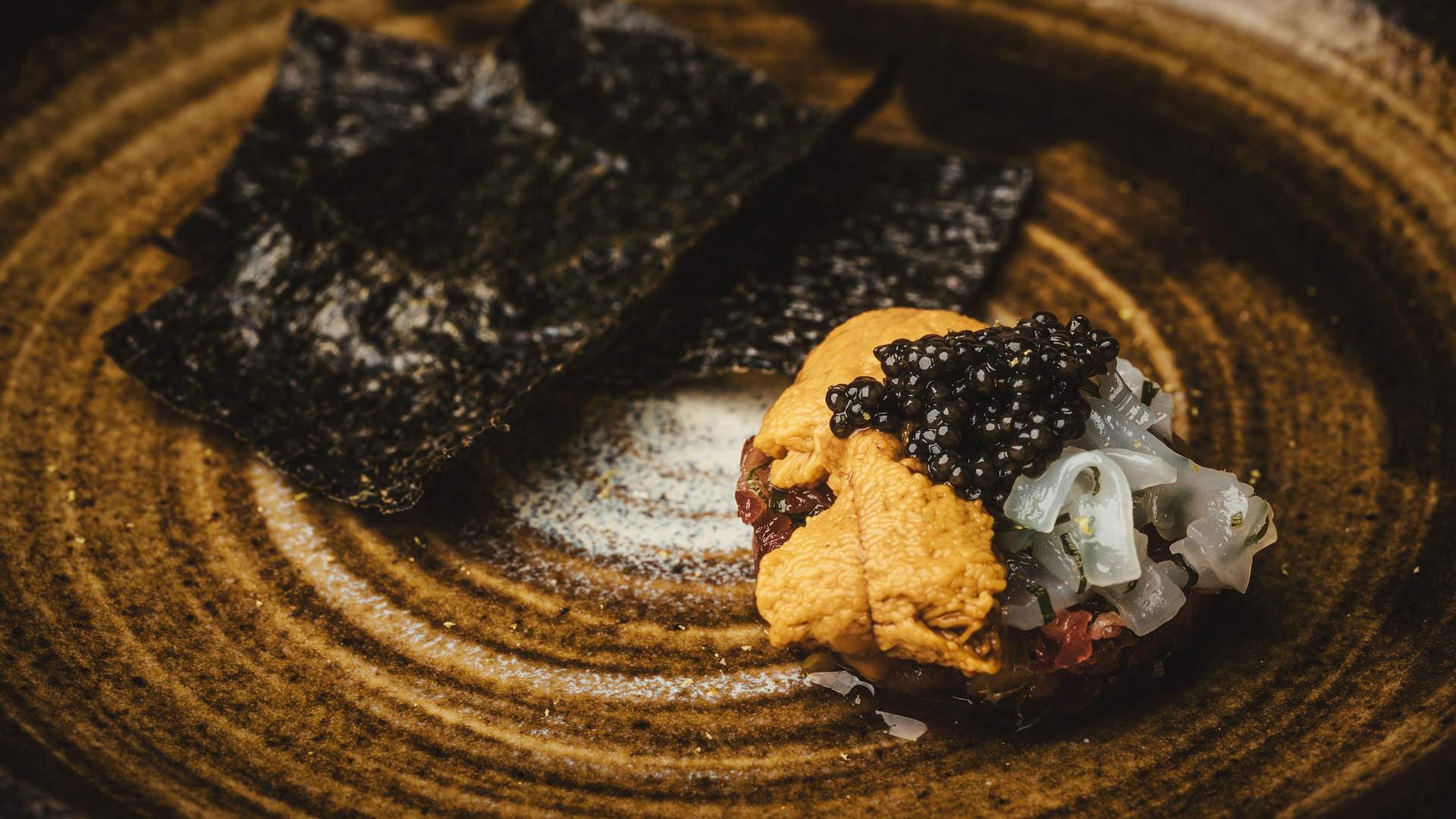
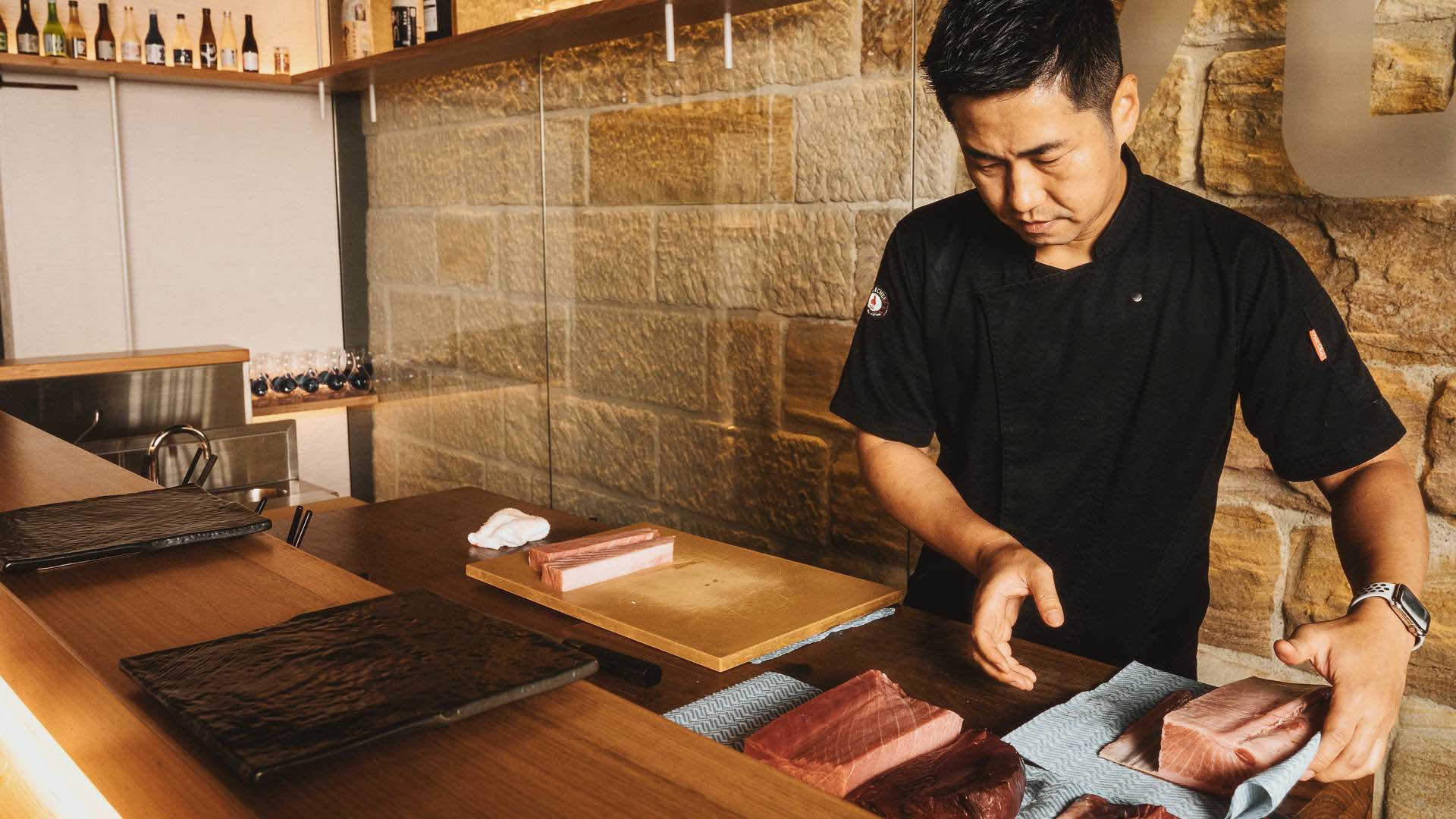
From ideas to plates
You must have a lot of trust in your own palate!
“I test everything before [it makes it onto the] menu. If it’s good for me, I just serve it.”
Could you talk me through the blowtorched scampi dish you made earlier?
“With that dish, I am using scampi from New Zealand. And with scampi, I like some spiciness, so I made a spiced miso sauce and seared it to make more flavour, as well as jalapeño and coriander to give a little bit of a kick.”
I noticed you seared the miso sauce with the blowtorch as well, not just the scampi — what does that bring to the dish?
“That was just a lucky coincidence. I actually burnt the sauce the first time — there was a burnt taste but a little bit more flavour came out too. So, I just seared a little bit, and no burnt taste — but I got the sweetness and spice deeper.”
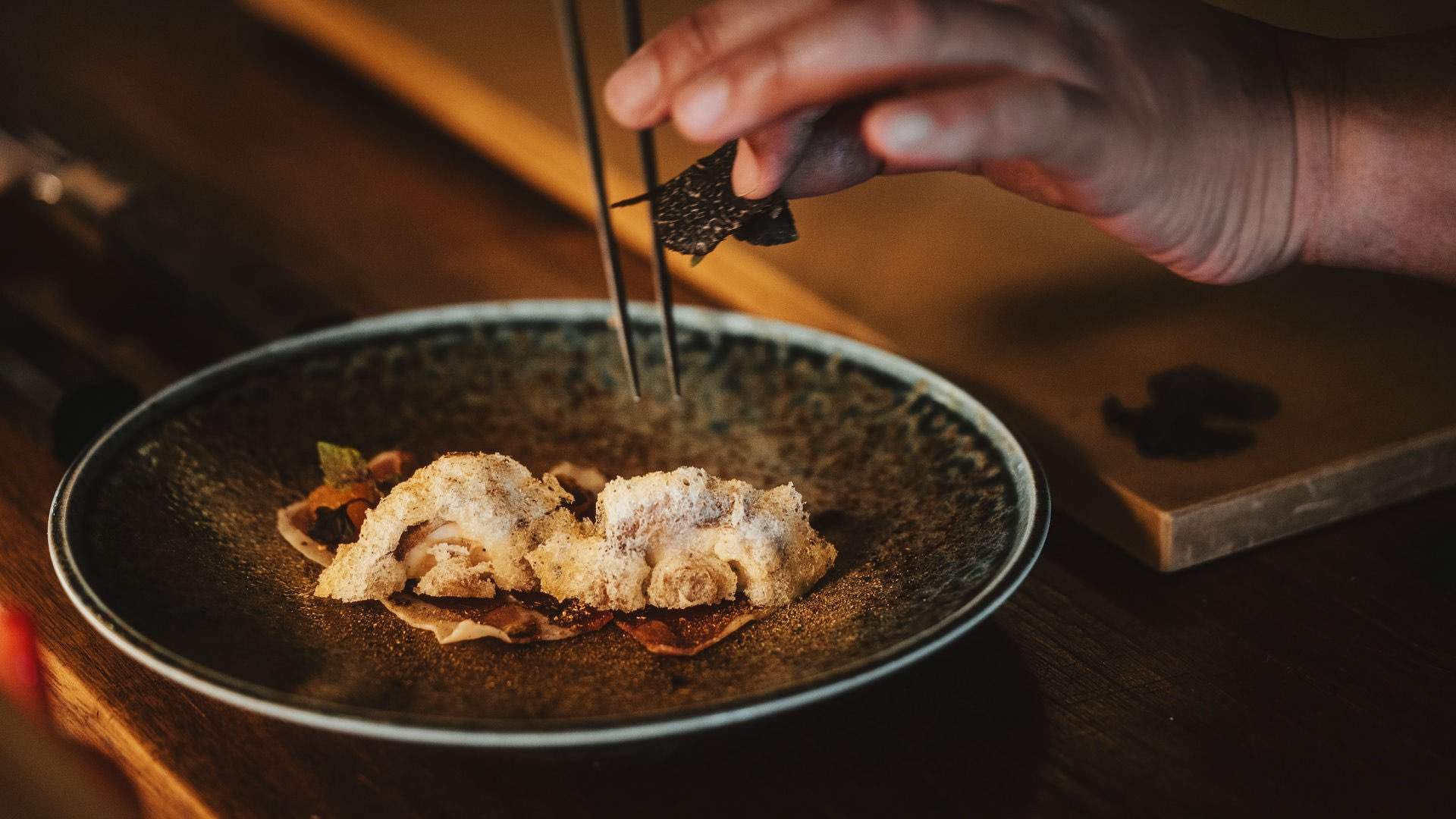

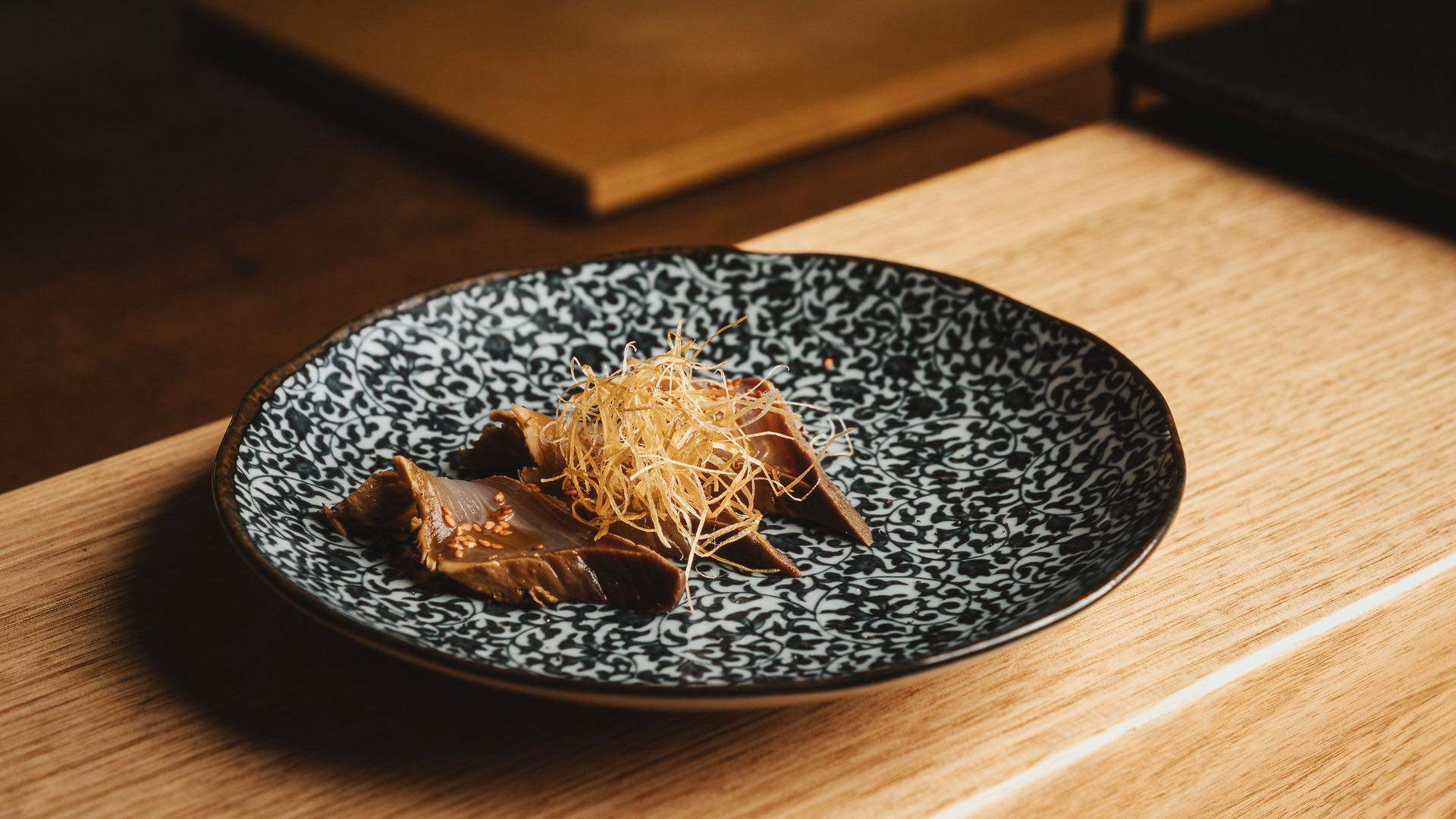
Conceptualising and executing an omakase menu obviously requires a lot of creativity and passion. Do menus come to you naturally?
“Although not every dish is successful during the first attempts, I have always enjoyed creating new dishes. I worked in other restaurants, and interacted with my regulars — they always like something not on the menu, so they can feel special *laughs*. That creative discipline nurtured a good habit. I’m not a traditional Japanese chef, I’m from Korea. All my senior Japanese chefs, they tried to teach me in an old traditional way, but I always like something new and different.”
Do you bring any traditional aspects into what you do?
“Yes of course, [my base flavour profiles are] traditional — soy sauce or miso sauce, I create from them. I also try not to watch any other chefs work so I can remain authentically original. I try to instil this discipline in my team during our creative sessions. Sometimes [new dishes can take] two minutes to develop, and sometimes three months.”

On that, you shared earlier that it took three months to execute the plate that brings together jamon serrano, melon and mushroom tempura (pictured above). What were you experimenting with during that time?
“It [began] with the simple idea that I wanted to use jamon with mushroom, that was it. I just tried it on the spot, only with two ingredients, and it tasted like… nothing. I made the mushroom tempura again, used some honey to balance them and it started working. One of my chefs told me that jamon and melon goes really well together… okay, let’s make some marmalade. I had mushroom tempura, jamon serrano, melon marmalade and I [still wanted] a bit more of the mushroom taste — so I dusted the dish with dry porcini mushroom and white truffle oil. To balance those flavours took almost three months.”
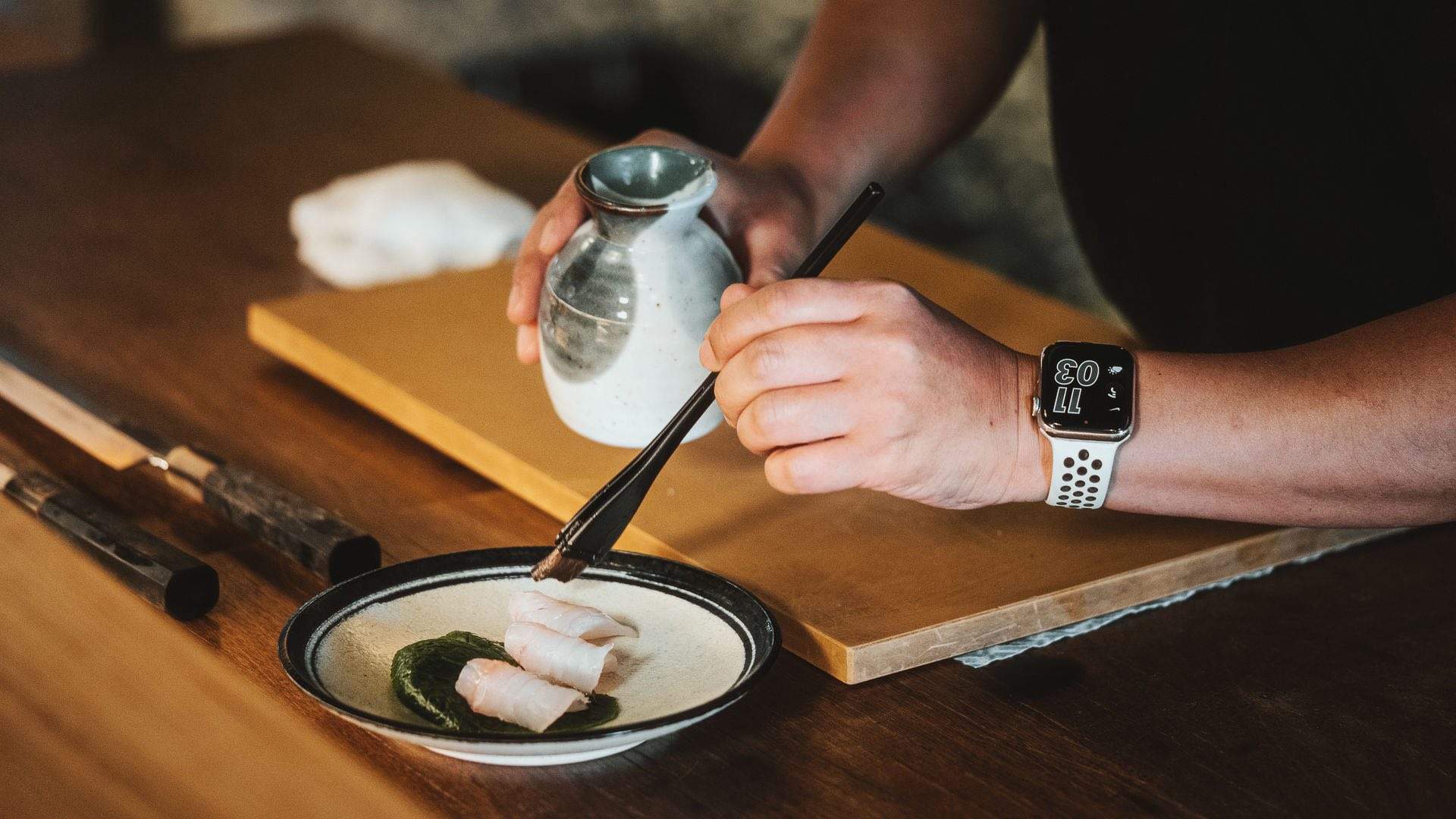
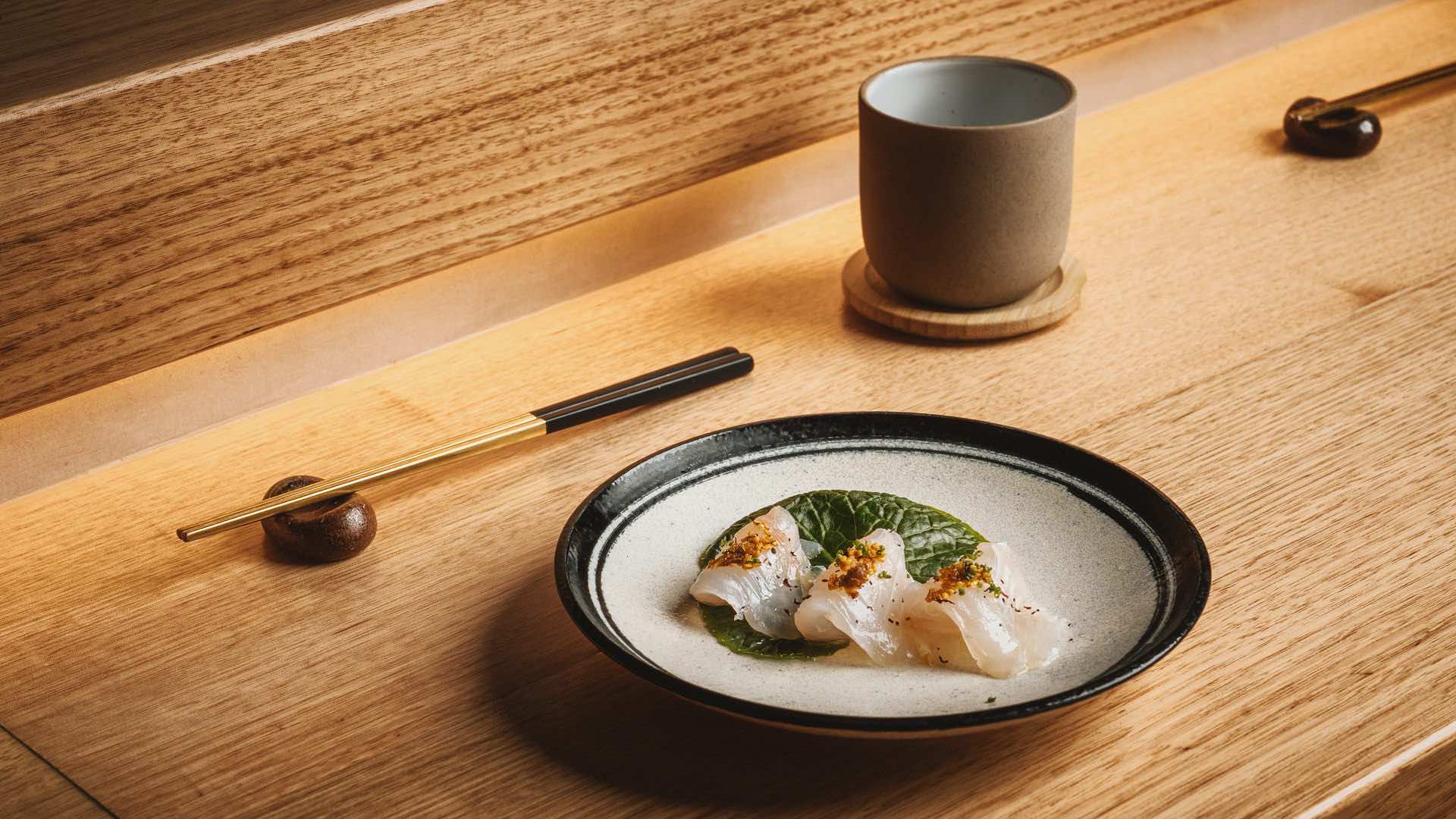
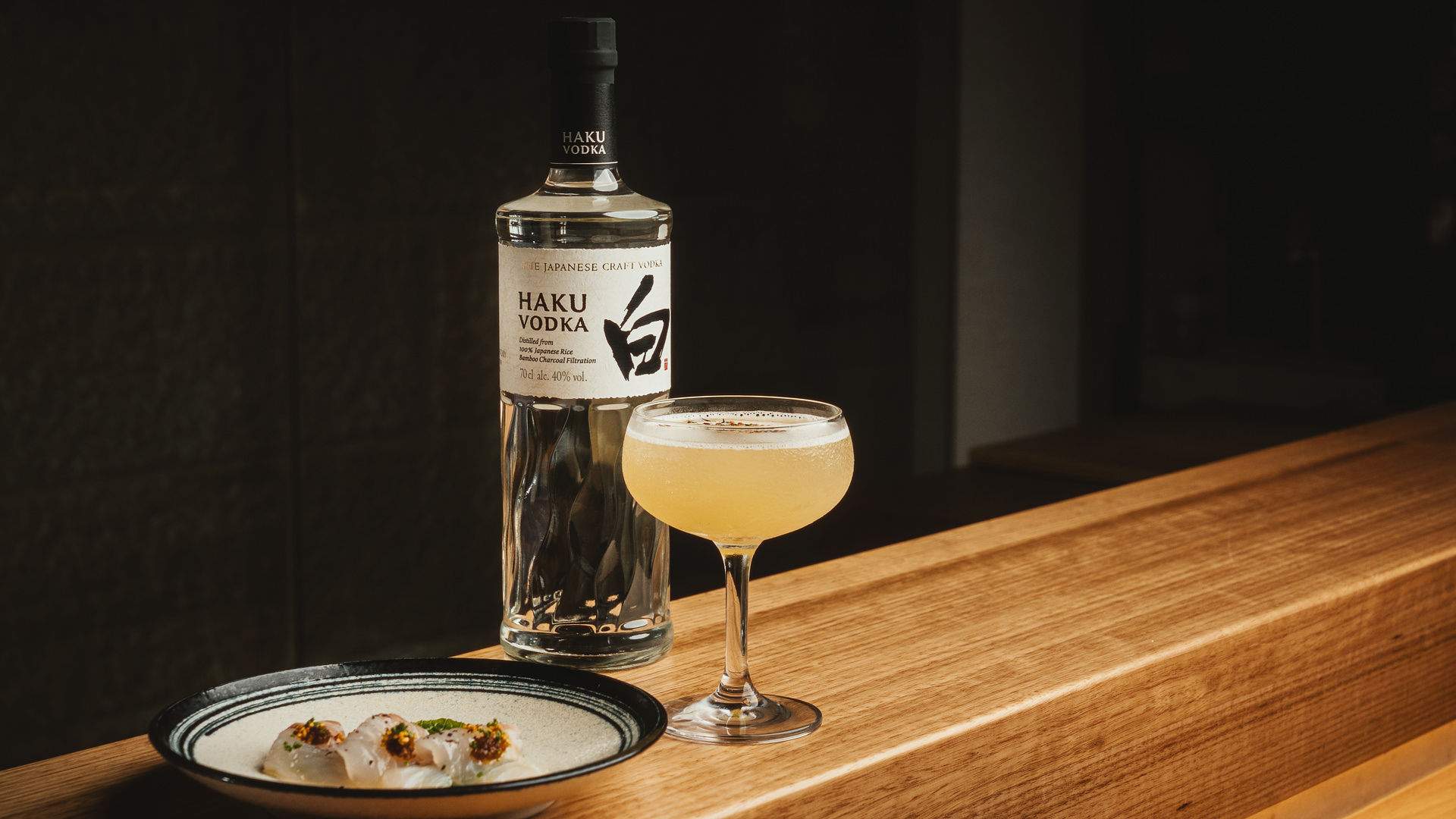
It sounds like there’s lots of collaboration with your chefs.
“Yes, of course. I used to do everything by myself, but we have a very strong team now — my sous chef, junior sous chef, they’re all clever and they want to make something new. Whenever I have ideas, I discuss with them. It motivates my chefs as well. If they just do all the same job, they get bored; but when I inspire them to make a new one together, it’s more cheering up. It makes my team stronger.”
Do you consider flavour and texture equally when you’re creating a dish?
“Texture and flavour is the most important thing. Once [they’re good], I then focus on using colours for plating. We eat with our eyes, so the plating must make the dish even more appetising.”
Where did your own passion for cooking come from?
“My Mum. She is special. I’d actually never cooked before I came to Australia. But, thanks to my mum I have [a nice palate]. When I made my first dishes I wasn’t a chef, but I tried to make something at home and it was good. Then I became a sushi chef — I found out I have smart hands and my tongue is good enough to season everything. Of course it takes time — six, seven years — to make my skills perfect, then creating new dishes followed. Once I got confident, it was very natural.”
Do you always have to be on top of your game when you’re creating omakase at Bay Nine?
“I need to have confidence, otherwise I get very nervous. When I was in another sushi bar, most of the guests were Western and actually very easy to satisfy. Asian guests sometimes get judgmental. They’re like, ‘Okay, let’s see if this guy can make sushi or not’ *laughs*.”
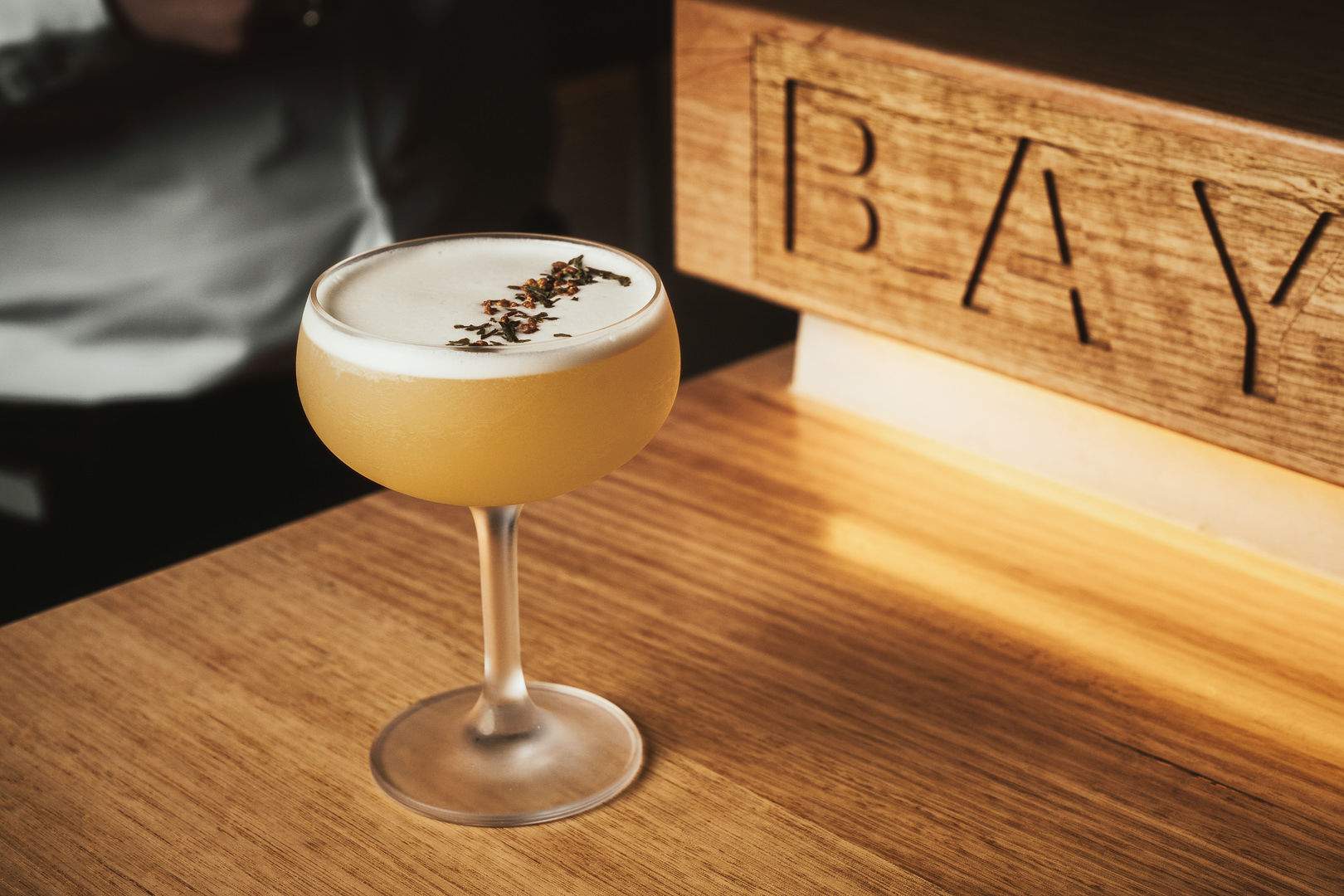
Bay Nine's Haku Martini
Restaurant manager Anthony Sin created Bay Nine’s Haku Martini as the opener of the omakase drinks experience and will be on the menu exclusively during the first months of spring. The herbaceous foam-topped cocktail marries fruity notes and the nuttiness of brown rice, setting a high bar for the pairings to follow.
“There are two stages to our Haku Martini,” starts Sin. “Infusing the vodka with our genmaicha tea blend at room temperature for earthiness and a very mellow tone, and brewing the sencha green tea with the syrup itself. Then, add the juices, shaking heavily and straining. That’s it.”
Ingredients
30ml Lime juice
15ml Sencha Syrup
Genmaicha to serve
Ice
Cold-infuse 700ml of Haku Vodka with five teaspoons of genmaicha tea for fifteen minutes, then fine strain and rebottle.
Add 350g of sugar and 350ml of water to a pot, then rest a tea infuser filled with five teaspoons of sencha (Japanese green tea) into the liquid. Bring to the boil. Reduce heat and simmer for 20–25 minutes. Remove tea, let cool and then bottle.
To a mixing glass add ice, 45ml of genmaicha-infused vodka, 15ml of sencha syrup, 60ml of pineapple juice and 30ml of lime juice. Shake well.
Strain into a chilled coupe, then top with a sprinkle of genmaicha.
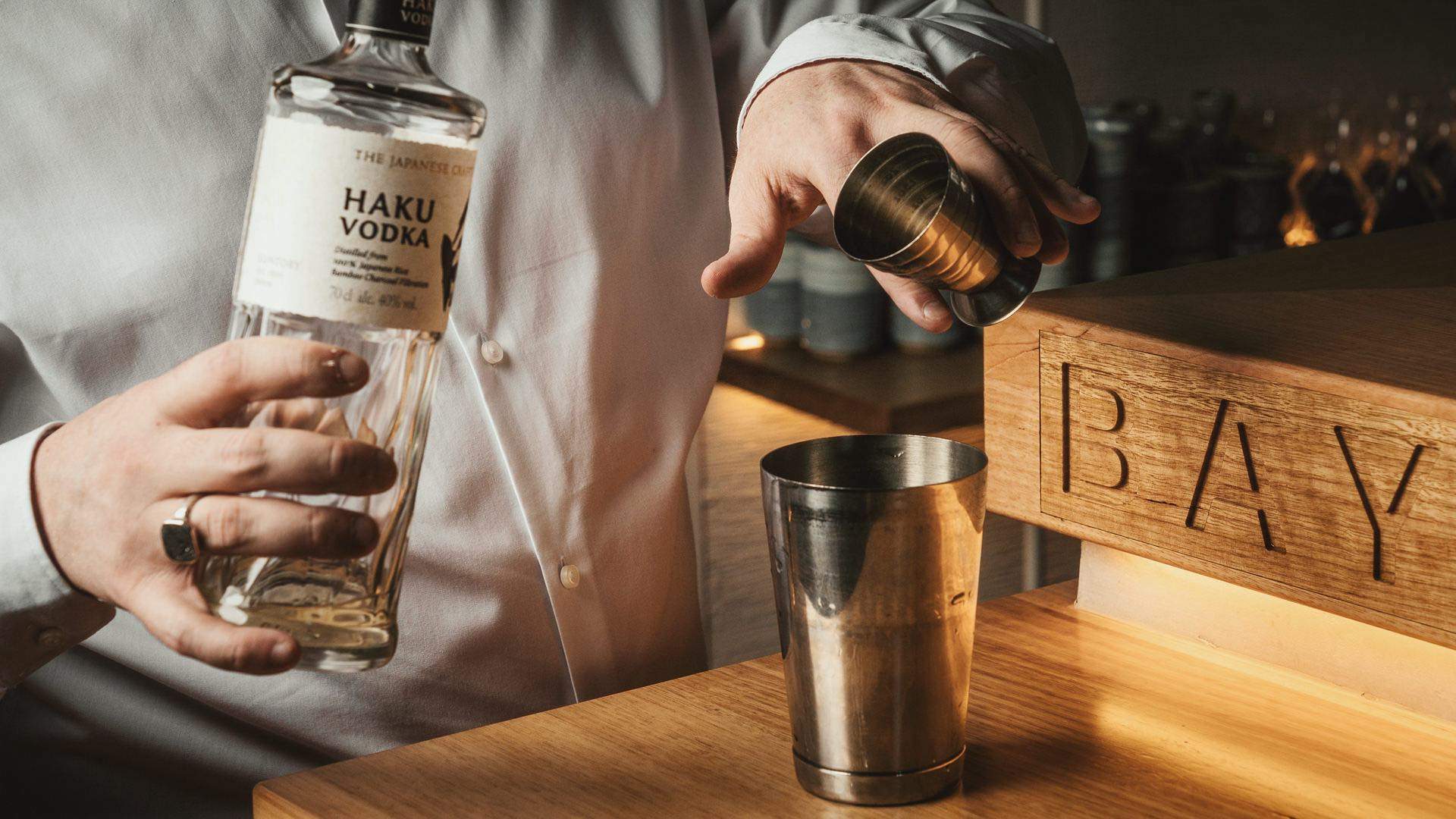
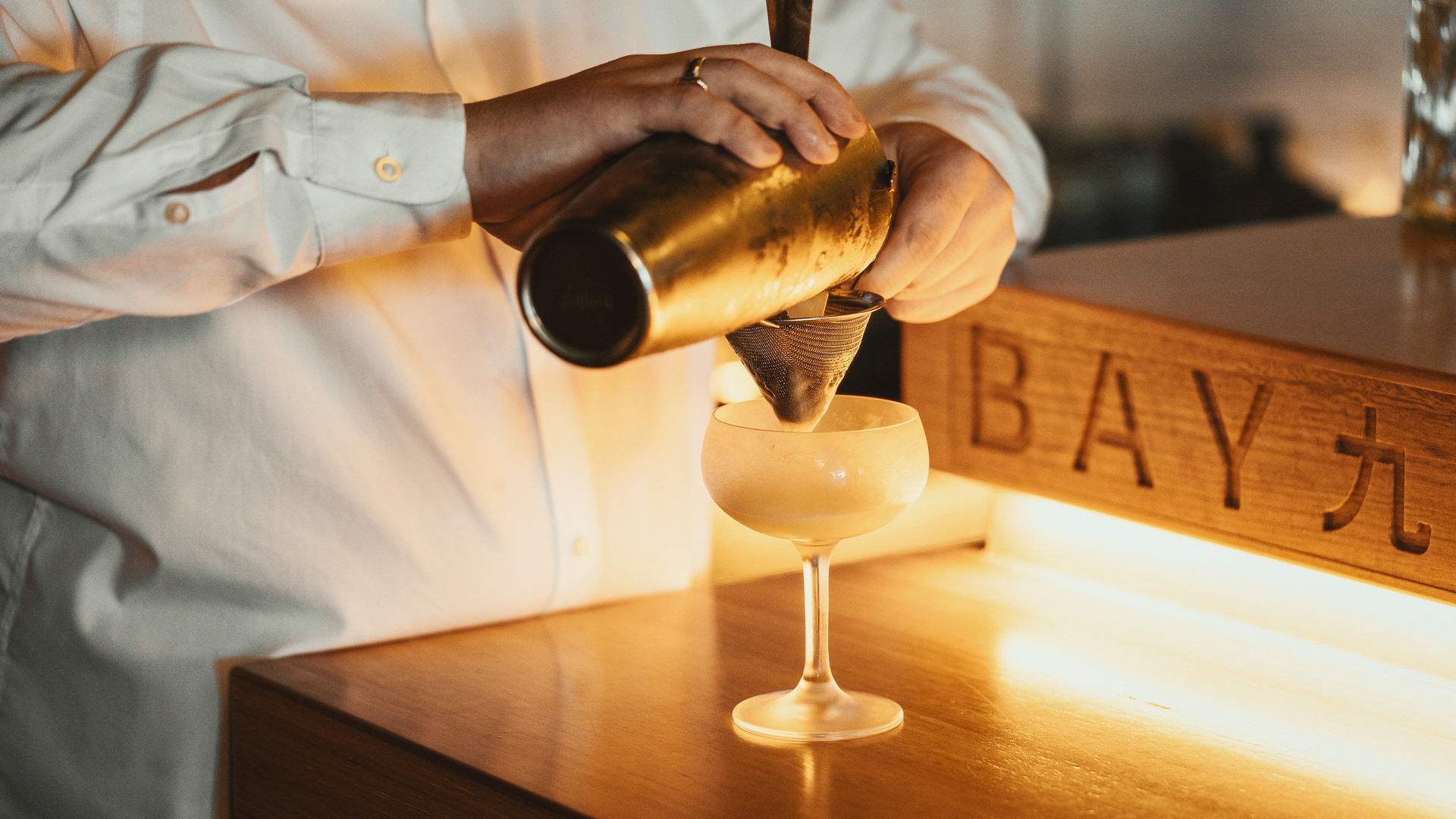

Bay Nine’s Haku Martini is layered and complex. The brown rice is prominent from the first sip, after the tropical notes ease, and green tea enlivens both hue and taste. “For us, it’s all about quality ingredients,” Sin closes. “That’s why the majority of people are here. For Haku, its smooth texture is what drives people to choose it. With Japanese products, quality matters — people really do taste the difference.”
From Friday, September 1 till Friday, September 15 all seatings at Bay Nine will begin with a complimentary Haku Martini. To secure your spot head to the website. Bay Nine will reserve two seats (run-of-house) for Concrete Playground readers. To claim: quote “Love Bay Nine x Haku” at the time of booking.
Haku Vodka’s signature serve is the Haku Martini, a drink that showcases the craftsmanship, nuanced flavour and exceptional quality of the premium Japanese liquid. To learn more, head to the website.
Images: Declan Blackall
Article updated August 14, 2023.